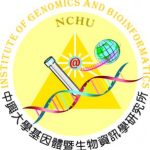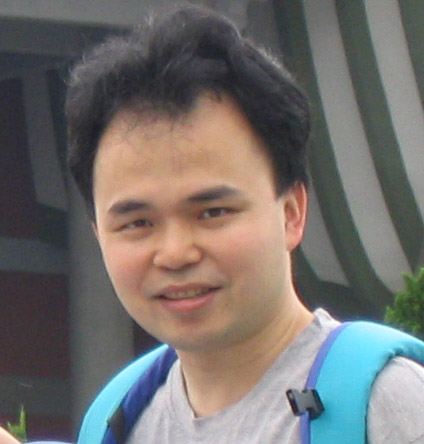
Hsieh, Li-ching

Lab :
Experience:
| Title | University/Institute | Period |
|---|---|---|
| Associate Professor | NCHU, Institute of Genomics and Bioinformatics | 2011.2-now |
| Visiting Scholar | University of Chicago, Department of Ecological Evolution | 2004.12-2005.11 |
| Postdoctoral Fellow | Academia Sinica, Genomics Research Center/Institute of Information Science | 2004.8-2011.1 |
| Ph.D. | NCU, Department of Physics |
Teaching:
| Courses |
|---|
|
Applied Genomics and Bioinformatics: Lecture and Experiment, Introductory Biostatistics with R, Special Topics in Biological Data Analysis, General Physics, General Physics Lab |
Research:
| Research Interests |
|---|
| Evolution of microRNA upstream regulatory networks, p53 / miR-34 network evolution, Evolutionary conservation of influenza A virus hemagglutinin (HA) protein |
Journal & Seminar :
Research: Computational Biology, Evolutionary Biology Comparative Genomics, NGS data analysis
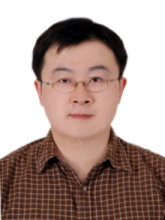
Liu, Jyung-Hurng

Lab: Structural Bioinformatics Lab
Honors:
| Time | Title |
|---|---|
| 2006/07 | “Glycosphingolipid-facilitated membrane insertion and internalization of cobra cardiotoxin: crystal structure of the cardiotoxin/sulfatide complex.” 中央研究院分子生物研究所 學生/助理/博士後申請出席國際學術會議獎助 |
| 2004/10 | “Crystal structure of PriB, a primosomal DNA replication protein of Escherichia coli.” 國家同步輻射研究中心第十屆用戶年會暨研討會 學生口頭報告比賽第二名與壁報比賽佳作 |
| 2004/05 | “Crystal structure of PriB, a primosomal DNA replication protein of Escherichia coli.” 第九屆生物物理新知研討會青年學子壁報論文獎第二名 |
Experience
| Title | Department | Period |
|---|---|---|
| Joint Assistant Professor | Graduate Institute of Biotechnology, NCHU | 2008/08 – now |
| Assistant Professor | Institute of Genomics and Bioinformatics | 2009/02 – now |
| Assistant Professor | Biophysics Society of R.O.C. | 2007/05 – |
| Adjunct Assistant Professor | Graduate Institute of Biotechnology, NCHU | 2007/02 – |
| Joint Assistant Professor | Department of Life Sciences, NCHU | 2007/02 -now |
| Assistant Professor | Biotechnology Center, NCHU | 2008/08 -now |
| Postdoctoral Fellow | Institute of Molecular Biology, Academia Sinica | 2006/01 – 2007/01 |
| Ph.D. | Graduate Institute of Life Science, National Defense Medical Center and Academia Sinica | 2001/08 – 2005/12 |
| M.S. | Institute of Genetics, National Yang Ming University | 1995/09 to 1997/06 |
| B.P. | School of Pharmacy, Taipei Medical College | 1991/09 to 1995/06 |
Professional
| Content |
|---|
|
Speech
| Content |
|---|
|
Lectures
| Course [download course materials] |
|---|
|
| Expertise |
|---|
|
Research
| Lab research [details] |
|---|
|
Research Interests:
My research interests are in the structure and function of a wide range of important biological macromolecules, including: I. Chromatin structure remodeling mechanism in yeast The eukaryotic genome is packaged into chromatin, which can inhibit the accessibility of certain DNA binding factors to their cognate sites in vivo. However, changes in chromatin structure play an important role in processes such as transcription, replication, DNA damage repair, and recombination. Two such ATP-dependent chromatin remodeling complexes in yeast Saccharomyces cerevisiae include the SWI/SNF complex and the RSC complex (Remodels the Structure of Chromatin). Of the two, only RSC is essential for viability, serving an important function in cell cycle progression from G2 to M. RSC is an abundant complex of at least 16 subunits, which was purified on the basis of homology of several of its subunits to those of the SWI/SNF complex.
II. JAK/STAT signaling pathway in fruitfly The signal transduction pathway conducted by JAK (Janus Activated Kinases) and STAT(Signal Transducers and Activators of Transcription) plays a critical role in hematopoiesis and immune response, and mis-regulation of the pathways is associated with a wide range of immunologic diseases and to leukemia in humans. However, the structure/function relationship of the interaction between cytokine receptors, JAKs and STATs still remains largely elusive duo to the lack of structural information. In vertebrates, there are many ligands, receptors, JAKs and STATs making this signaling pathway very complex to be analyzed. By contrast, the JAK/STAT pathway in the fruitfly Drosophila melanogaster is less redundant offering a simpler model to study.
III. The telomere system of the Streptomyces linear plasmid SCP1 Linear plasmids and chromosomes of Streptomyces carry terminal proteins (TPs) covalently attached to the 5′ ends of the DNA. Most known telomeres are conserved in primary sequence and in the potential secondary structures formed during replication. The TP that caps these telomeres is also highly conserved and its coding gene, tpg, is present in most Streptomyces chromosomes and some linear plasmids. However, linear plasmid SCP1 of Streptomyces coelicolor contains atypical telomere sequences and no tpg homologue, and can replicate in the absence of tpg, suggesting that it carries a novel TP gene. A gene on SCP1 (designated tpc) encodes the TP that caps the SCP1 telomeres. The Tpc protein sequence does not resemble the Tpg proteins. A gene (designated tac) upstream of tpc was also required for replication of the SCP1 telomeres. These findings indicate that the Tac-Tpc system of SCP1 represents a novel telomere-capping system of Streptomyces linear replicons. |
Publications
| Journal (*Corresponding author) |
|---|
|
| Conference (*Invited speaker) |
|---|
|
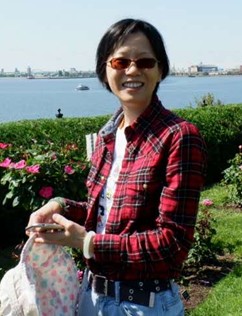
Chen, Yu-Ting

Experience
| Title | Department | Period |
|---|---|---|
| Associate Professor | NCHU, Institute of Genomics and Bioinformatics | 2019/08-present |
| Assistant Professor | NCHU, Institute of Genomics and Bioinformatics | 2013/03-2019-07 |
| Section Director | NCHU, Biotechnology Center Reference and Consultation Section | 2008/08 – 2009-03 |
| Assistant Professor | NCHU, Biotechnology Center | 2008/08 – 2009-03 |
| Assistant Professor | NCHU, Biotechnology Center | 2006/08 – 2008/07 |
| Adjunct Assistant Professor | Hsing Wu University, General Education Center | 2005/09 – 2006/06 |
| Visiting Scholar | United States Department of Agriculture | 2005/03 – 2005/08 |
| Postdoctoral Research Fellow | Academia Sinica, Institute of Plant and Microbial Biology | 2003/03 – 2006/07 |
| PhD | National Defense Medical Center, Graduate Institute of Life Sciences | 1995/08 – 2003/02 |
| M.S. | TTU, Department of Chemical Engineering | 1993/09 – 1995/06 |
| B.S. | TTU, Department of Chemical Engineering and Biotechnology | 1989/09 – 1993/06 |
Research
| Research Interests |
|---|
|
Lectures:
| Course |
|---|
|
Biochemistry, Experimental Biochemistry, Applied Genomics and Bioinformatics: Lecture and Experiment, Applied Genomics and Bioinformatics: Lecture and Experiment,Functional Biology |
Publications
| Journal (*Corresponding author) |
|---|
|
| Conference (*Invited speaker) |
|---|
|
| Books |
|---|
|
| Patent |
|---|
|
Research: Molecular biology, Plant Transgenic, Plant Functional Genomics, Bioenergy
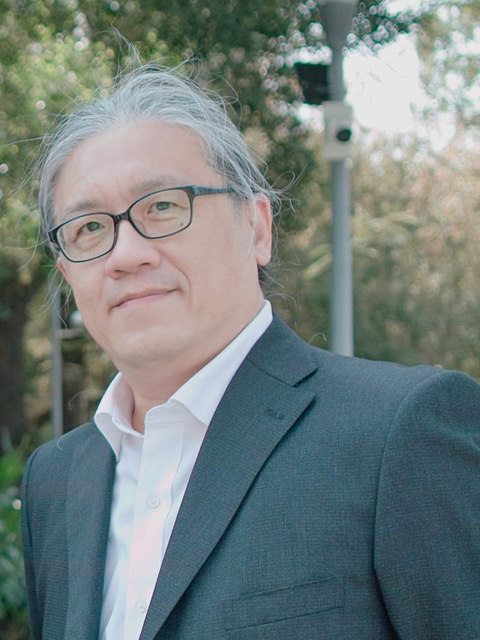
Chen, Ying-Tsong

Lab: Microbial Genomics Core Laboratory
Experience
| Title | Department | Period |
|---|---|---|
| Professor | NCHU, Institute of Genomics and Bioinformatics | 2022.08 – |
| Adjunct Associate Investigator | National Health Research Institutes, Institute of Molecular and Genomic Medicine | 2019.08- |
| Joint Associate Investigator | National Health Research Institutes, Institute of Molecular and Genomic Medicine | 2018 – 2019 |
| Associate Professor | NCHU, Institute of Genomics and Bioinformatics | 2015.02 – 2022.08 |
| Assistant Professor | NCHU, Institute of Genomics and Bioinformatics | 2010.08 – 2015.01 |
| Joint Assistant Investigator | National Health Research Institutes, Institute of Molecular and Genomic Medicine | 2011 – 2017 |
| Assistant Professor | NCHU, Institute of Genomics and Bioinformatics | 2009 – 2010 |
| Postdoctoral Fellow | National Health Research Institutes, The Division of Molecular and Genomic Medicine | 2004~2009 |
| PhD | NCTU, Department of Biological Science & Technology |
Research
| Research Interests |
|---|
|
Lectures:
| Course |
|---|
|
Biochemistry (University Department of Horticulture) |
Publications
| Journal (∗Corresponding author) |
|---|
|
| Conference (*Invited speaker) |
|---|
|
Research: Microbial Genomics, Functional Genomics, Comparative Genomics, Plasmids
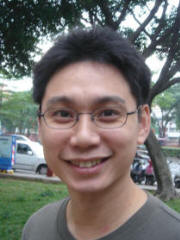
Chu, Yen-Wei

Lab: Natural Computing & Bioinformatics Laboratory
Experience
| Title | Department | Period |
|---|---|---|
| Review Editor | Frontiers in Digital Public Health | 2021/07 – present |
| Editor | International Journal of Genomics, Proteomics, Metabolomics & Bioinformatics | 2017/12 – present |
| Editor | International Journal of Pharmacology, Phytochemistry & Ethnomedicine | 2015/11 – present |
| Editor | Journal of Biochemistry and Molecular Biology Research | 2014/10 – present |
| Editor | Journal of Computation in Biosciences and Engineering | 2013/11 – present |
| Lead Guest Editor | Journal of Neuroscience and Neuroengineering | 2012 – 2013 |
| Professor | NCHU, Institute of Genomics and Bioinformatics | 2019/08 -present |
| Associate Professor | NCHU, Institute of Genomics and Bioinformatics | 2012/08 -2019/07 |
| Assistant Professor | NCHU, Institute of Genomics and Bioinformatics | 2008/08 – 2012/07 |
| Advisory Committee Member | ROC, Ministry of Health and Welfare | 2006 – present |
| Assistant Professor | Asia University, Department of Bioinformatics and Medical Engineering | 2006/08 – 2008/07 |
| Lecturer | YUMT, Department of Information Management | 2005/08 – 2006/07 |
| Lecturer | CUTE, Department of Information Management | 2003/09 – 2005/07 |
| Consultant | IT Division, Transformer Bobbin Industrial Co., LTD | 1998/03 – 2000/03 |
| Lecturer | Association of Electronic Multi-education, R.O.C. | 1997/03 – 1999/06 |
| PhD | NCTU, Department of Computer Science | 1998/09 – 2006/07 |
| M.S. | Department of Computer Science, National Chiao Tung University |
1996/09 – 1998/07 |
| B.S. | Department of Computer Science, National Chiao Tung University |
1992/09 – 1996/07 |
Research
| Research Interests |
|---|
|
Lectures:
| Course |
|---|
|
Special Topics in The Application of Natural Computing, Machine Learning, Current Approaches in Bioinformatics, Bioinformatics Programming, Bioinformatics: Lecture and Experiment, Applied Genomics and Bioinformatics: Lecture and Experiment |
Publications
| Journal (*Corresponding author) |
|---|
|
| Conference (*Invited speaker) |
|---|
|
| Books: |
|---|
|
Research: Bioinformatics algorithms, Precision medicine, Intelligent agriculture, Big data analysis, Artificial intelligence
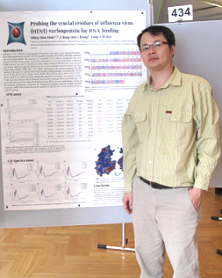
Hou, Ming-Hon

Lab: Drug Design and Chemical Biology Core Lab
Experience
| Title | Department | Period |
|---|---|---|
| Professor | NCHU, Institute of Genomics and Bioinformatics | 2013.08–Now |
| Associate Professor | NCHU, Institute of Genomics and Bioinformatics | 2010.02– 2013.07 |
| Adjunct Assistant Professor | NCHU, Graduate Institute of Biotechnology | 2008.8-2010.01 |
| Joint Assistant Professor | NCHU, Department of Life Sciences | 2008.8-2010.01 |
| Joint Assistant Professor | NCHU, Biotechnology Center | 2008.8-2010.01 |
| Assistant Professor | NCHU Institute of Genomics and Bioinformatics | 2008.08 – 2010.01 |
| Assistant Professor | NCHU, Biotechnology Center | 2007.02-2008.07 |
| Assistant Professor | Shih Chien University, Department of Food Science, Nutrition, and Nutraceutical Biotechnology | 2004.8-2007.1 |
| Postdoctoral Fellow | Institute of Biological Chemistry, Academia Sinica | 2003.8-2004.7 |
| Ph.D. | NTU, Institute of Biochemical Sciences | 1999.09-2003.07 |
| M.S. | NCHU, Graduate Institute Of Biochemistry | 1997.09-1999.07 |
Research
| Research Interests |
|---|
|
Lectures:
| Course |
|---|
|
Genetics, Bioinformatics: Lecture and Experiment, Protein Engineering, Structural Bioinformatics, Special Topics in Biotechnology, Applied Genomics and Bioinformatics: Lecture and Experiment, Special Topics in Biotechnology |
Research
| Lab Research |
|---|
Our major research projects include:
In order to solve the health problems that human beings are facing today, our lab focuses on the development of novel drugs against several important infectious diseases, genetic diseases, and cancers. Our specialty research field can be divided into two parts: (1) Developing nucleic acid-binding drugs for cancer therapy and investigating the mechanisms of these anti-cancer drugs and (2) Investigating the function and structure of nucleoside proteins from viruses, such as coronavirus and influenza virus, and developing new anti-viral drugs. These two aspects of our research focus on developing essential therapy drugs for important diseases that affect all humankind. Our group showed that the binding of Chromomycin A3 to the repetitive DNA duplex can induce the conformational changes in the DNA structure in presence of the metal ions. This study is a useful contribution towards the use of the metalloantibiotic not only for the therapeutic but also for the diagnostic purposes in neurological diseases (Angew Chem Int Ed Engl in 2017). On the other hand, we solve the crystal structure of the CCG triplet repeats sequence with i-motif structure related to neurological disease. Our observation of this i-motif structure provides a molecular-level pathological consequence of DNA expansion (Angew Chem Int Ed Engl in 2014). Furthermore, we discovered that the drug actinomycin D can also bind to repetitive DNA sequences to induce the sharp bends in the DNA with flipping out of the bases. This study was a very useful contribution from our group against the drug development for the neurological diseases due to DNA repeat expansions (NAR in 2013). In addition, we are also interested in developing the novel antiviral agents against the various respiratory viruses including coronavirus and influenza virus. We have studied the coronaviruses 229E and OC43 as experimental models, specifically focusing on nucleocapsid protein. In these analyses, we have examined its biochemistry, biophysics, immunology, and its potential as a target for antiviral drugs. In our recent findings of the N protein of coronavirus, we propose guidelines for developing new N protein-based antiviral agents that target CoVs (Journal of medicinal chemistry, 2014). Influenza spreads very rapidly and has a high mortality rate. Tamiflu (oseltamivir), which is a neuraminidase inhibitor, is used to treat patients. However, several H1N1 influenza strains are known to be resistant to Tamiflu because of the H274Y mutation in neuraminidase. In order to find out the new drugs acting on the nucleoprotein of the influenza virus, we develop a fluorescence-based assay to monitor nucleoprotein binding to a potential inhibitor. This assay can also be useful in screening the new drugs against the other viral proteins also such as HBV or HIV (Analytical Chemistry in 2012). |
Publications
| Journal(*Corresponding author) |
|---|
|
| Conference (*Invited speaker) |
|---|
|
Research: DNA-binding drug design, The study of function and structure of viral nucleocapsid protein, Antiviral drug development
